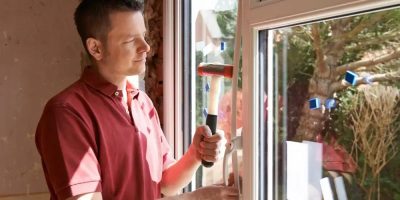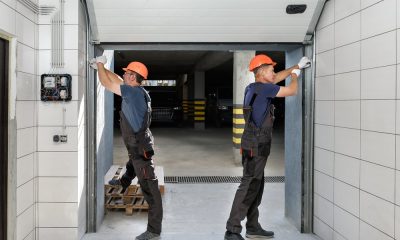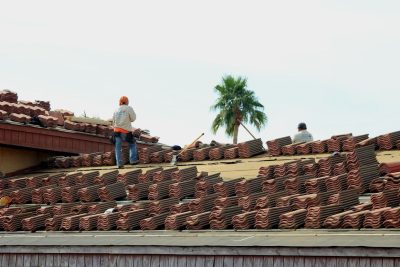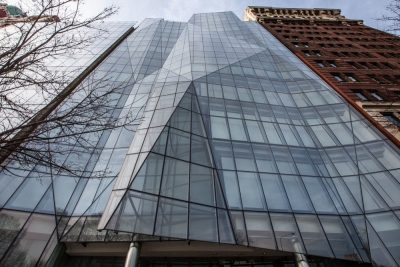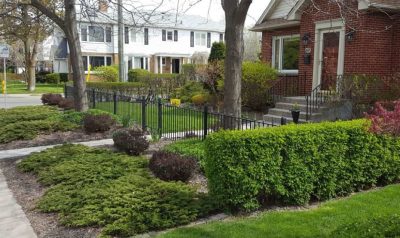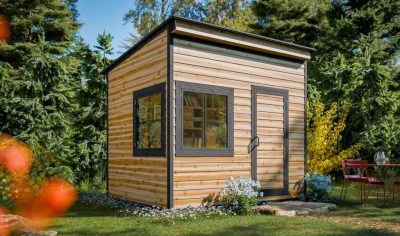
Welcome to the future, where our homes are smarter, cars are autonomous, and roofs… well, roofs are downright revolutionary! Yes, you heard right—today, we’re talking about future-proofing your roofing systems.
Picture this: a roof that not only protects your home but acts like a shield against crazy weather, helps you save a ton on energy bills, and quite possibly adds some serious “wow” factor to your house. The future of roofing is here, and it’s way cooler than you might think!
Buckle up and let’s dive into how you can stay ahead in the ever-evolving landscape of roofing technology.
Understanding Modern Roofing
The realm of modern roofing has dramatically transformed, shedding the monochrome options of the past for a vibrant array of technologies that offer both style and substance. Today’s roofs are not just about aesthetics; they are about embracing technology to enhance the livability and sustainability of your home. Innovations like solar tiles that harness the power of the sun or green roofs that welcome nature onto your home, each serve to elevate the traditional concept of roofing into something that is both an asset and a feature of your modern home.
Why Future-Proof Your Roof?
Future-proofing your roof is much more than a precaution; it is a proactive step towards adapting to both the unpredictable whims of nature and the certainty of technological progress. This investment goes beyond mere resilience, embracing energy efficiency, increasing property value, and securing peace of mind. With each enhanced feature, your roof becomes a key component of your home’s defense and functionality, proving that it is both a shield and a resource.
Protection Against the Unexpected
In an era where extreme weather is becoming more frequent and intense, equipping your home with a roof designed to withstand these conditions is crucial. Future-proof roofing is engineered using materials and designs that can resist high winds, heavy rains, and other harsh elements. Such a roof not only stands a better chance of surviving these events but also ensures less disruption to your daily life.
Lower Energy Bills
Energy costs are a significant concern for homeowners, and future-proof roofing addresses this directly. By integrating energy-efficient materials and technologies like cool roofs or solar panels, these roofing systems reduce the need for artificial cooling and heating. This not only leads to lower energy bills but also contributes to a smaller carbon footprint, aligning your home with broader environmental goals.
Peace of Mind
Knowing that your roof is built with the latest in roofing technology gives you a sense of security and comfort. This peace of mind comes from understanding that your home is equipped to handle the challenges of both today and tomorrow, safeguarding your family and your investment. The assurance that your home is protected by a durable and reliable roof is invaluable.
Increased Property Value
A future-proof roof enhances your home’s marketability and appeal. When potential buyers see a home with a roof that promises lower energy costs, minimal maintenance, and advanced protection against the elements, it becomes a compelling investment. This can translate directly into higher property values, making your choice to invest in advanced roofing a financially savvy decision.
The Benefits of Future-Proof Roofing
Investing in a future-proof roof not only protects your home from environmental threats but also transforms it into a model of sustainability and efficiency. Here’s an in-depth look at the incredible advantages of adopting a futuristic approach to roofing:
Enhanced Resilience
A future-proof roof acts as a formidable barrier against the unpredictable forces of nature. It is crafted from advanced materials that have undergone rigorous testing to ensure they can withstand severe weather conditions such as hurricanes, blizzards, and extreme heatwaves. These materials are often more robust, less prone to damage, and better able to cope with environmental stressors like UV radiation and thermal cycling. Innovative design elements, such as improved fastening systems and impact-resistant surfaces, also play a crucial role, ensuring that roofs are not just durable but also adaptable to various climate conditions. This enhanced resilience helps prevent catastrophic failures and the need for emergency repairs during severe weather events.
Optimized Energy Efficiency
Future-proof roofs are at the forefront of energy-saving home design. They incorporate technologies such as solar shingles, which seamlessly integrate photovoltaic cells to capture sunlight and convert it into usable electricity, reducing reliance on external power sources. Additionally, cool roof technologies use highly reflective materials to deflect more sunlight and absorb less heat than traditional roofing materials, drastically lowering indoor temperatures and reducing the load on air conditioning systems. Superior insulation techniques also contribute by maintaining consistent indoor temperatures, whether in the heat of summer or the cold of winter. Together, these features drastically improve the energy efficiency of buildings, leading to substantial reductions in energy costs and contributing to a more sustainable home environment.
Reduced Maintenance and Longer Lifespan
The materials used in future-proof roofing are selected not only for their durability but also for their longevity and ease of maintenance. These materials often include advanced composites and metals that resist corrosion, decay, and weather-related wear and tear. This robust construction means that future-proof roofs require less frequent repairs and routine maintenance, which can significantly reduce the long-term cost of ownership. Moreover, the extended lifespan of these roofing systems—often double or triple that of traditional roofing materials—means homeowners can enjoy decades of reliable protection without the need for a costly replacement. This durability also adds to the overall value of the property, a vital consideration for future resale.
Sustainability and Environmental Impact
Future-proof roofing systems are designed with the planet in mind. Options like green roofs not only provide excellent insulation but also reduce runoff, combat urban heat island effects, and offer habitats for local flora and fauna, thereby increasing biodiversity. Recyclable materials reduce the waste associated with roof construction and replacement, minimizing the environmental footprint. Additionally, rainwater harvesting systems can be integrated into these roofs, allowing homeowners to collect and reuse rainwater for landscaping and other non-potable uses, further reducing the demand on municipal water systems and lowering water bills. By choosing a future-proof roof, homeowners contribute to a sustainable future, reducing both their environmental impact and enhancing their home’s efficiency.
By embracing these benefits, future-proof roofs provide homeowners not only with a secure and cost-effective home environment but also with the satisfaction of making a positive impact on their surroundings and the environment.

Key Trends in Future-Proof Roofing
The roofing industry is continually evolving, incorporating advanced technologies that not only enhance the functionality of roofs but also contribute significantly to environmental sustainability and energy efficiency. Here’s an in-depth exploration of the key trends that are shaping the future of roofing:
- Solar Integration
Modern solar technologies such as photovoltaic shingles and tiles are designed to blend seamlessly with the traditional aesthetic of your roof while harnessing solar energy. Unlike older bulky solar panels, these new integrations are virtually indistinguishable from traditional roofing materials but work to convert sunlight into electricity. This technology not only helps homeowners reduce their electricity bills but also increases the value of the property. For those considering solar-integrated roofing, it’s important to assess the orientation and angle of your roof to maximize solar exposure and energy generation. Additionally, many governments offer incentives and rebates for solar energy installations, making this an economically attractive option. - Cool Roofing
Cool roofing technology uses highly reflective paints, tiles, or shingles to reflect more sunlight and absorb less heat than standard roofing materials. This significantly lowers roof surface temperature by up to 50 degrees Fahrenheit, leading to a decrease in indoor temperatures during hot weather. The result is a substantial reduction in air conditioning use, lowering energy bills and decreasing the strain on the electrical grid during peak times. Cool roofs are particularly beneficial in hot climates where air conditioning costs are a major concern. Installing a cool roof can be as simple as selecting the right material and color when replacing a roof or as involved as applying a specialized reflective coating to an existing roof. - Green Roofs
Green roofs, or living roofs, are covered with vegetation and a growing medium, installed over a waterproofing membrane. They are excellent for insulating buildings—reducing the need for heating in winter and cooling in summer—and managing stormwater. By absorbing rainwater, green roofs can prevent excessive runoff and decrease the burden on urban sewage systems. Moreover, they help combat the urban heat island effect by cooling the air and providing oases of greenery in concrete-heavy urban areas. Green roofs also promote biodiversity by providing habitats for various species of insects and birds. When planning a green roof, it’s important to consider structural support, as the additional weight of soil and vegetation can be significant. - Smart Roofing Systems
Smart roofing systems incorporate sensors and IoT (Internet of Things) technology to monitor a roof’s condition continuously. These systems can detect issues such as leaks, structural weaknesses, and temperature anomalies in real-time, allowing for prompt maintenance before minor issues become major problems. Some smart roofing systems can even provide data on energy usage and efficiency, helping homeowners optimize their heating and cooling. For those interested in smart roofing, choosing a system that can integrate smoothly with other home automation systems and provide actionable insights through an easy-to-use interface is crucial.
Each of these trends offers homeowners the opportunity to not only future-proof their homes against environmental challenges but also to take proactive steps towards creating more sustainable and energy-efficient living spaces. Whether through the direct utility savings of solar and cool roofing, the ecological benefits of green roofs, or the preventative maintenance advantages of smart roofing systems, the modern roofing industry provides a variety of options to suit different needs and preferences.

Considerations for Future-Proofing Your Roof
When planning to future-proof your roof, several critical factors should guide your decision-making process to ensure that your investment is both practical and beneficial over the long term. Here’s what you need to consider:
Professional Assessment
Before making any decisions, it’s crucial to have a thorough assessment conducted by a qualified roofing expert. This professional can evaluate the current state of your roof, taking into account factors such as age, existing damage, and previous material used. Additionally, they will consider local climate conditions—which could affect the choice of materials—and your specific needs based on your home’s design and your personal preferences. This assessment will help identify potential vulnerabilities and provide tailored recommendations for roofing solutions that will best withstand your local environment. Moreover, a professional can help navigate the complexities of roof installation, ensuring that the work meets industry standards and building codes.
Material Choices
Choosing the right materials is paramount in future-proofing your roof. When selecting materials, consider factors such as:
-
-
- Longevity: How long is the material expected to last under normal weather conditions in your area?
- Durability: Can the material withstand extreme weather events like hurricanes, hailstorms, or heavy snow?
- Performance: How well does the material perform in terms of energy efficiency? For instance, certain materials may have better insulative properties or reflectivity that can keep your home cooler.
- Sustainability: Does the material have eco-friendly credentials such as being recyclable, sourced from sustainable practices, or contributing to reduced carbon emissions?
-
Materials like metal roofing can offer durability and longevity, while green roofs can provide excellent insulation and environmental benefits. Similarly, solar tiles can offer energy savings which, over time, can offset the costs of the roofing itself.
Incentives and Regulations
Many regions offer incentives for homeowners who choose to install energy-efficient or sustainable roofing systems. These can include tax rebates, grants, or other financial incentives that can significantly reduce the initial cost of installation. Researching these programs can provide substantial savings and make a more advanced roofing system more affordable.
It’s also important to understand any local regulations that might affect your roofing project. Some areas have strict building codes related to the type of roofing materials used or how they must be installed. Ensuring compliance with these regulations can prevent legal issues and ensure that your roofing project proceeds smoothly.
Local or national environmental agencies and roofing associations often provide detailed information on regulations and incentives. Additionally, your roofing contractor should be able to provide guidance on what incentives and regulations apply to your project.
By carefully considering these factors, you can ensure that your investment in a future-proof roof is well-planned, cost-effective, and beneficial for both the short-term and long-term comfort and sustainability of your home.
Final Words
In conclusion, investing in future-proofing roofing systems is a wise choice that enhances the safety and sustainability of your home, while also contributing to significant long-term savings, environmental benefits, and increased property value. By incorporating advanced materials, leveraging modern technologies like solar integration, and adhering to eco-friendly practices, you can transform your roof into a vital component of your home that is both resilient and efficient. These upgraded roofing systems not only protect against the elements but also boost your home’s curb appeal and marketability, making them a compelling asset should you decide to sell. Whether you are renovating an existing roof or constructing a new one, considering professional assessments, choosing the right materials, and taking advantage of available incentives and regulations will ensure that your roofing project meets your needs and supports a sustainable future. As the roofing industry continues to evolve, staying informed and proactive about these advancements will place you at the forefront of home improvement, ready to face whatever challenges the future may hold.
The information in this article was compiled with the assistance of Robbins Roofing, a professional roofing company based in Mustang, Oklahoma, and a collaborator of HomeWorldDesign. Robbins Roofing offers a full range of roofing services throughout Oklahoma. For more expert information on roofing, you can contact them at: https://robbinsroofinginc.com/.


